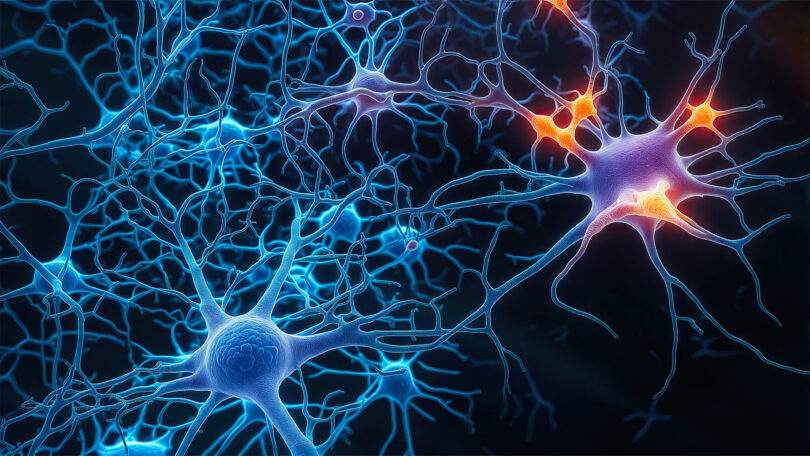Throughout history advancements in technology have played a significant role in how we live our lives. It has continuously aided in healthcare breakthroughs and holds significant potential for the future. Researchers at Sunnybrook are using emerging artificial intelligence (AI) technologies to overcome some of health care’s most complex challenges, revealing brain structure and function changes in neurological diseases.
The human brain is an extraordinarily complex organ responsible for our thoughts, memory, breathing and so much more. Its intricate networks, made up of billions of neurons working together, make our actions possible. Neurodegenerative diseases like Alzheimer’s and Parkinson’s disease can impact the patterns of these cells’ activity, and being able to map these networks and the cellular activity within them can inform potential treatments for these conditions.
Scientists have recently developed powerful microscopy systems and molecular techniques that create three-dimensional images of cells to study brain function and activity in detail. However, these images are exceptionally large and complex (with trillions of pixels), making it very difficult to detect changes in network activity patterns.
To address current gaps, a group of researchers in the Hurvitz Brain Sciences Research Program, in collaboration with teams in the United States and Europe, developed the AI-based Cartography of Ensembles (ACE) pipeline, a software that identifies patterns of brain cell activity in large volumes of brain data. A study describing the ACE pipeline architecture and its application in complex neuroscience problems was recently published in Nature Methods. ACE was designed using cutting-edge deep learning algorithms and trained on more than 30,000 3D images curated from microscopy images.
“ACE is capable of analyzing a wide variety of microscopy images, meaning researchers can use the pipeline to gain new insights into how specific populations of cells in different regions of the brain respond to disease,” says Ahmadreza Attarpour, the first author of the study and PhD candidate at SRI and the University of Toronto. “ACE goes beyond traditional methods relying on brain maps that divide the brain into pre-defined regions based on their coarse structural differences.”
Our novel pipeline acts as a detective, pointing out cell activity and patterns that would be otherwise difficult for even highly trained professionals to identify.”
The tool has the potential to accelerate discoveries in neuroscience because of its ability to help researchers accurately identify patterns of activity in specific cell groups and networks within every region of the brain. Researchers can monitor these patterns to better understand how neurological diseases affect brain activity and how treatments may normalize these activity patterns.
“Using ACE, scientists can evaluate the effects of experimental drugs on a particular population of cells across the brain or identify novel targets for neuromodulation therapies,” adds Dr. Maged Goubran, scientist in the Hurvitz Brain Sciences Research Program and Physical Sciences Platform and co-senior investigator of the study.
“ACE provides a powerful tool for mapping brain function and circuitry, paving the way for breakthroughs in neuroscience research and, ultimately, improved patient outcomes,” explained Dr. Bojana Stefanovic, senior scientist and director of the Physical Sciences Platform at SRI and co-senior investigator of the study.








